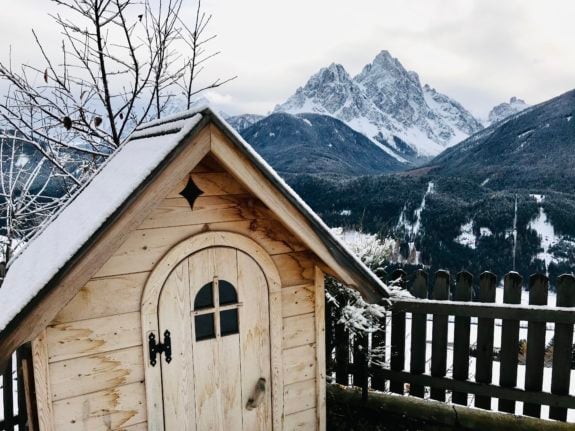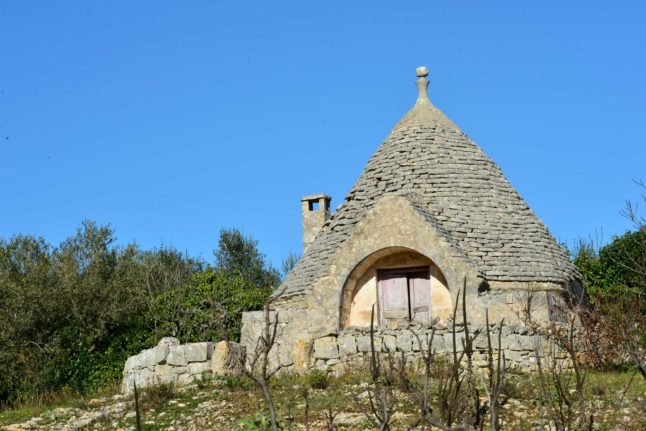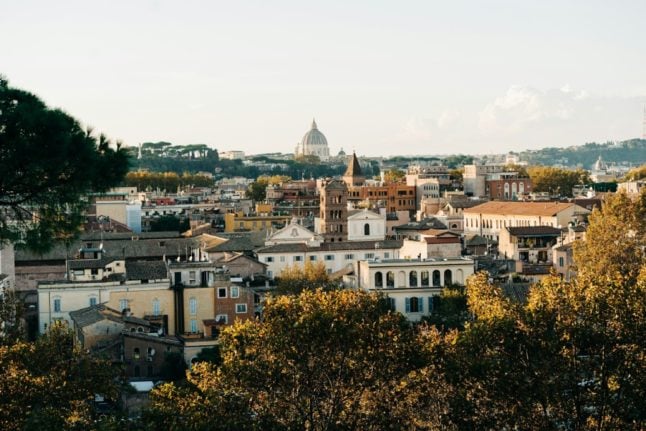I believe there’s nothing more luxurious than simplicity, especially when it comes down to accommodation and travel.
And it seems that tourists visiting Italy agree. Several accommodation business owners have recently told me there’s a high demand for chic but simple experiences, both in terms of holiday homes to rent and hotels, as well as restaurants.
Unexpectedly, these places are more expensive to buy or rent than modern rentals and hotels.
There’s a sort of ‘expensive poverty’ glamour that lures travelers. That’s why there’s been such a revival of ancient dwellings across Italy, well beyond the famous luxury spa-type hotels set in old cave houses like the ones in Matera, Grottole and other southern areas.
It’s an emerging trend that feeds the primeval nature of man. Travellers want to reconnect with mankind’s ancient heritage – but with money and a few modern comforts.
READ ALSO: Is Italy’s west or east coast the best place for a holiday?
Take the simple treehouses that are springing up recently in Puglia, near Foggia, within lush forests where visitors are surrounded by nature – but at the same time inside a cozy room. The experience may recall our prehistoric roots in some way.
Or reverting to sleeping in sea grottos originally inhabited by primitive men, then turned into cozy white-washed fishermen shelters where entire crews would take shelter during storms.

The tiny atoll of Palmarola off Rome’s coast is dotted with fishermen grottos turned into élite summer retreats, rented with private dinghies starting from 500 euros per person per night. One such grotto home has a double entrance that cuts right through the rock, so you have panoramic sea views on both sides – great for solo morning swims.
On the nearby island of Ponza, where caveman used to go looking for the precious obsidian black stone, clifftop seafront villas cut into hillsides are the most in-demand accommodation.
I once met a young couple who was staying in one of these for two weeks and it was funny how they enjoyed such an isolated place with no easy access (only by boat). At night they would climb down to their little dock along a steep dark path without any lights lined with prickly pear shrubs to get to a little dinghy (that comes with the villa) that would take them each time to the main village to shop, eat and so on. It was like their scooter.
I fell, scratched my legs and nearly broke my neck visiting, and it was daylight. They enjoyed going around with flashlights at night because it was cool, they said. Oh, and their kingsize shower also had a limited water supply, because it used rainwater as a source like in the good old days.

This is all part of a new trend that’s unique to Italy, given the country’s rich, ancient architectural heritage.
The cone-shaped trulli of Puglia are an iconic type of accommodation, found not only in Alberobello, the most touristy place of all, but scattered all over the area, where families that own one in their backyard can rent it at high prices – as referenced in the funny Italian movie titled ‘Mi rifaccio il trullo’ (I’ll give my trullo a makeover).
READ ALSO: Why visitors to Italy are ditching hotels – and where they’re staying instead
Last time I visited the Alto Adige region I was surprised at seeing so many old ‘masi’, which are Alpine dairy lodges and farms built by ancient shepherd tribes with thick stone walls and slanted roofs, lavishly restyled and transformed into country houses offering ‘nature stays’. The ‘spa’ at the one I stayed at was the actual freezing stream outside with currents, so I just had to take a dip and have my legs massaged by the running water, and the spring water served at dinner came also from that same stream.
The owners are a very rich couple who hate cars, so they would travel from their house to the lodge on horseback. Obviously all the teas and herbs I drank came from the maso’s garden.

In Sicily I found interesting salt pan mills turned into panoramic bars, while near my house medieval olive oil millis, or frantoi, are now busy pizzerias and B&Bs with stone rooms featuring the original grindstones.
In the region of Abruzzo, the entire coast is dotted with old wooden sea huts dubbed Trabocchi suspended above water with fishnets, abandoned by fishermen families after the second world war and now turned into restaurants with a cute, romantic vibe.
All these ancient dwellings which are being restored for tourist use are in demand because they offer a chapter of history and an ‘immaterial cultural experience’. That is why people are prepared to pay whatever the price.
It’s a bit like renting a tribal tent in an African luxury resort: you’d be paying more for the ‘emotions’ it triggers than the tent itself.
With savvy travelers always looking for that special, out-of-the-ordinary experience, this ‘luxury poverty’ accommodation trend will only keep growing in popularity.





 Please whitelist us to continue reading.
Please whitelist us to continue reading.
Member comments